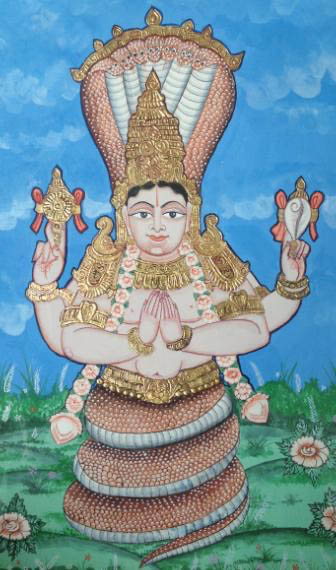Much of what we see as yoga today comes from The Yoga Sutras of Pantanjali. Written by the sage Patanjali (or possibly by a collection of authors collectively known as Pantanjali) around 2,000 years ago, this collection of 196 short aphorisms is the contemporary roadmap for mastering the art of yoga and meditation. It is in this foundational text where we find the Yamas.
Many of us equate yoga with poses or Asana. Nope, the Yoga Sutras only mentions asana in 3 of the 196 sutras. Instead, this book delves into the philosophy, psychology, and techniques that help you tame that chatty mind of yours. It covers everything from ethics (hello, Yamas and Niyamas!) to meditation and the ultimate goal—achieving a state of liberation.
Pantanjali wrote of these 8 limbs in Yoga Sutra 2.29:
- Yamas – ethical guidelines or restraints
- Niyamas – observances or self-discipline
- Asana – poses, physical postures
- Pranayama – breath work
- Pratyahara – sensory withdrawal
- Dharana- concentration
- Dhyana – meditation
- Samadhi – a state of absorption
You can think of the limbs as a spokes on a wheel, each limb connects with the others and is part of the whole process. Over time, we keep revisiting each limb and our understanding becomes deeper and more nuanced. For Pantanjali, the end goal of yoga is liberation (which is way too big of a topic for this blog post), but for us mere mortals, yoga provides a path to deeper self-awareness and deeper connection to life.
Yamas: the first limb
Let’s take a closer look at the first limb of Pantajanjali’s 8 limbs (ashtanga) yoga, the Yamas. These are often referred to as ethical practices or restraints, and they suggest how we interact with the world around us.
- Ahimsa (Non-harming): This one’s all about being kind, to yourself and others. It’s the universal golden rule. Do no harm to yourself or others in thought, word or deed.
- SATYA (Truthfulness): Speak your truth, but make sure it’s also kind and necessary. Basically, don’t go spilling tea that’s too hot for anyone to handle.
- Asteya (Non-stealing): This isn’t just about not swiping that fancy yoga mat from your neighbor. It also means not stealing someone’s time or energy. So, don’t be a drain—be a fountain!
- Brahmacharya (Non-indulgence or Right Use of Energy): Contrary to popular belief, this isn’t all about abstaining from sex. It’s about channeling your energy wisely, whether that’s sexual or not. Save that zest for the things that really matter in life!
- Aparigraha (Non-possessiveness, non-greed, non-attachment): In a world that screams “More, more, more!”, this Yama whispers “You’re good with just enough.” Embrace the freedom that comes from not hoarding stuff, emotions, or even those extra slices of cake (we’ve all been there).
The concepts we find in the Yamas aren’t earth shattering, they are common is most systems of ethics and morals which we grow up with. Thinking about these restraints through a yoga lens we see a path towards a less tumultuous mind. Look at it from the other side, what happens to us internally when we harm people, lie, steal, over-indulge, and cling firmly to material objects? We are likely to feel shame, defensive, judged… we need to hide what we do and the whole cycle of negative action gets deeper and deeper. How can we calm the mind and come to know our true self with all this stuff churning continuously?
We begin to feel a freedom in our own life by following the Yamas. We don’t need to hide or deceive, and we become free to focus on finding peace and joy through our practice.
How do the Yamas appear in our yoga practice?
In yoga class, our work may be big, strong, and sweaty or subtle, slow, and deep. Or it may take on a totally different shape. In any case, we can touch into the Yamas in our practice.
- Ahimsa – non-harming. Be sure whatever that your practice looks like, you are not doing any harm to yourself and others. This may be easier said than done. Our culture in America rewards us for going ‘hard’ and striving. We are taught that being sore (even very sore) after a workout is a sign that we have done good work. Not true! It’s not a race to see how much we can hurt before we break something. Staying attuned to our body during practice we can find our ‘edge’, approach that edge thoughtfully and with intention. Going beyond our edge leads to self harm. Similarly, encouraging others to push past their edge is harming and contrary to Ahimsa.
- Satya – truthfulness. Be honest with yourself. Are you being driven by concerns other than doing what is best for your well-being? A competitive tinge? A sense of “I’m doing it wrong”? Pulling back on effort and calling it being safe? We deceive ourselves in many ways, sometimes going to hard and sometimes not putting enough fire into our practice. Notice how you feel, truthfully asses yourself and then decide how to move forward. Keep ahimsa in mind, too. We’ve probably all heard “the truth hurts” or “I’m just being honest” after someone says hurtful words. The truth does not have to hurt! Observe how you speak to others and your own self-talk and find ways to make your words truthful and non-harming.
- Asteya – non-stealing. Another translation is to not take anything which is not freely offered. It may seem hard to connect stealing to how we practice on our yoga mats, but let’s try. Instead of looking at the outcome of Asteya, such as, maybe stealing someone else’s blocks, let’s investigate the desire that leads to stealing. When people steal, it’s usually coming from a lack of faith in ourselves to obtain what we desire. From this perspective there are two mentalities we can work with: lack of faith in ourself and a desire for more than what we already possess. Now, these can be affected by our yoga. As we build our practice, we find ourselves achieving poses, movements, clarity, and more, and from this we come to see that we are worthy of believing in ourself. The ‘desire’ part of Asteya will be addressed below in the Aparigraha section.
- Brahmacharya – right use of energy. Thinking back to the cultural tendency of pushing ourselves too hard so we become sore from a workout or yoga session, we can see a clear ‘wrong’ use of energy. This connects to a ‘hurts so good’ mentality where we push into harmful behaviors for the feel good brain chemistry. Brahmacharya is often translated as ‘celibacy’ which makes it a very unpopular Yama indeed. This is hotly debated, but many now see brahmacharya as more about directing our energy away from external pleasures and towards our internal work.
- Aparigraha – non-greed. In the Bhagvad Gita there is a line “your commitment is to action alone, not to the fruits of action” and that this ability to be indifferent to the outcome is yoga. Quite a concept! On our mat, this can be practiced by incorporating all of the above Yamas – don’t harm yourself, be truthful about your motives, appreciate only that which you have truly earned, and direct your energy towards your practice. We do our practice because it is what we choose to do and not because we desire a certain outcome.
Wow, that was a longer post than I thought it would be. Since the Yamas make up the first limb of Pantanjali’s ashtanga (8 limbs) yoga, it carries a certain weight to it. Much like our yoga poses, we build from the ground up. Strong feet, strong legs, steady breath… we work our way from the ground up in our asana. When we look to the internal aspects of our practice, these ethical restraints form the strong foundation upon which we build the rest of our spiritual practice both on and off our mat.
Take good care of yourself! Peace




